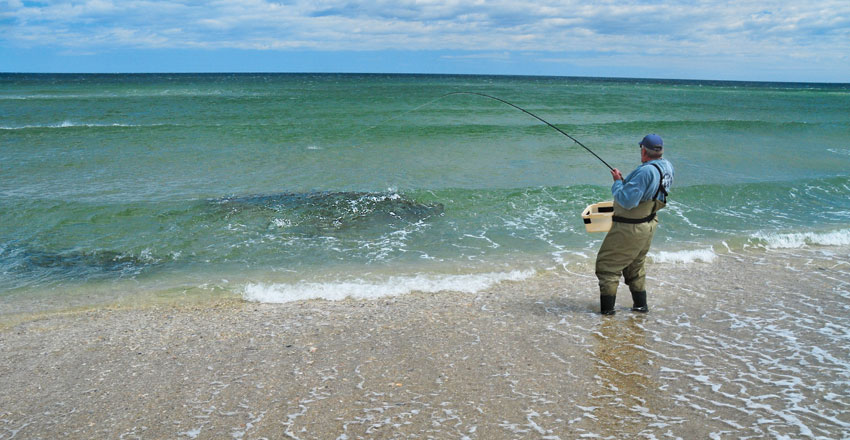Not only are bluefish abundant, but they’re also among the strongest fighters in the ocean. Few fish in the world put up more of a fight pound-for-pound than bluefish do. Bluefish are blue-green on the back and silvery on the sides and belly. They have a prominent jaw, with sharp, compressed teeth. What are Ideal Water Conditions for Bluefish?
Ideal Water Conditions for Bluefish:
- Temperature: 60-70°F (15.5-21°C)
- pH: 7.0-8.5
- Dissolved oxygen: >5 ppm
- Salinity: 25-35 ppt
- Alkalinity: >100 ppm
- Hardness: 100-200 ppm
- Water clarity: Slightly turbid preferred with appropriate lighting
- Cleanliness: Minimize pollution and contaminants
What are Ideal Water Conditions for Bluefish
Ideal water conditions for bluefish include temperatures ranging from 60°F to 70°F (15.5°C to 21°C) to support their metabolic activity and overall health. Maintaining a pH level between 7.0 to 8.5 is crucial, ensuring a neutral to slightly alkaline environment that promotes proper physiological function.
Adequate dissolved oxygen levels above 5 ppm are essential for respiration, while stable salinity between 25 to 35 parts per thousand (ppt) mimics their natural coastal habitat. Monitoring and managing factors such as ammonia, nitrite, and nitrate levels within safe ranges contribute to a healthy aquatic environment for bluefish, supporting their vitality and longevity.
In addition to these parameters, bluefish thrive in waters with moderate alkalinity (above 100 ppm) and hardness (100-200 ppm), which help stabilize pH levels and support osmoregulation. Water clarity and turbidity can also impact bluefish behavior, with some individuals showing a preference for slightly turbid waters that provide cover for ambushing prey.
However, overall water quality and cleanliness are essential, as pollution and contaminants can adversely affect bluefish health and habitat. Finally, while bluefish are adaptable to a range of conditions, maintaining stable water parameters consistent with their natural habitat ensures optimal conditions for their growth, reproduction, and overall well-being.
The ideal salinity for bluefish typically ranges between 25 to 35 parts per thousand (ppt), which is equivalent to specific gravity levels of approximately 1.020 to 1.025. Bluefish are euryhaline species, meaning they can tolerate a wide range of salinities, allowing them to inhabit various coastal and estuarine environments.
In their natural habitats, bluefish are commonly found in nearshore waters, estuaries, and coastal bays with moderate salinity levels. They can adapt to fluctuations in salinity due to tidal changes, freshwater inflows, and seasonal variations.
Maintaining stable salinity levels within the preferred range is essential for the health and osmoregulation of bluefish. In captive environments, such as aquariums or aquaculture facilities, it’s crucial to replicate the natural salinity conditions of their native habitats to support their physiological functions and overall well-being.
Regular monitoring of salinity levels, along with appropriate adjustments and water quality management practices, helps ensure a suitable aquatic environment for bluefish in captivity.

Ideal Water Depth for Bluefish Fishing
The ideal water depth for bluefish fishing can vary depending on various factors, including location, time of year, and prevailing environmental conditions. However, bluefish are commonly found in coastal waters and are known to frequent shallow to moderately deep areas along shorelines, estuaries, and nearshore reefs.
Shoreline Fishing: When fishing from the shoreline, bluefish can often be found in waters ranging from just a few feet deep to around 20 feet deep. They are known to patrol the surf zone, particularly where some sandbars or drop-offs create favorable feeding conditions.
Estuaries and Bays: In estuarine environments and bays, bluefish may inhabit shallow waters near marshes, channels, and tidal flats. Water depths in these areas can range from a few feet to several meters, depending on the tidal range and topography of the region.
Nearshore Reefs and Structures: Bluefish are often associated with nearshore reefs, rocky outcrops, and artificial structures such as jetties and piers. Fishing around these structures in water depths ranging from 10 to 30 feet can yield productive results, especially during periods of high activity.
Offshore Fishing: While bluefish are primarily coastal species, they may occasionally venture into deeper offshore waters, particularly during seasonal migrations or in pursuit of prey species. In offshore environments, water depths can vary significantly, ranging from several dozen to hundreds of feet.
When targeting bluefish, it’s essential to consider their feeding behavior, which often involves chasing schools of baitfish near the surface or along the edges of the structure and current breaks. Anglers may have success fishing in water depths where baitfish are abundant and where bluefish are actively feeding.
Ultimately, experimenting with different depths and locations based on local knowledge, weather conditions, and fish behavior can help anglers find success when targeting bluefish. Additionally, consulting with local fishing guides or experienced anglers can provide valuable insights into the best water depths and fishing strategies for catching bluefish in a specific area.
Ideal Weather and Barometer Pressure for Bluefish Fishing







